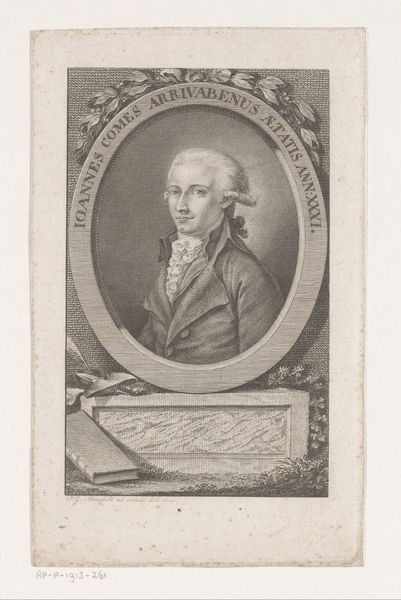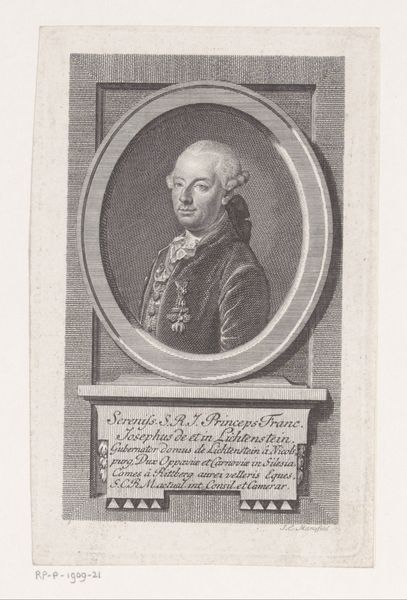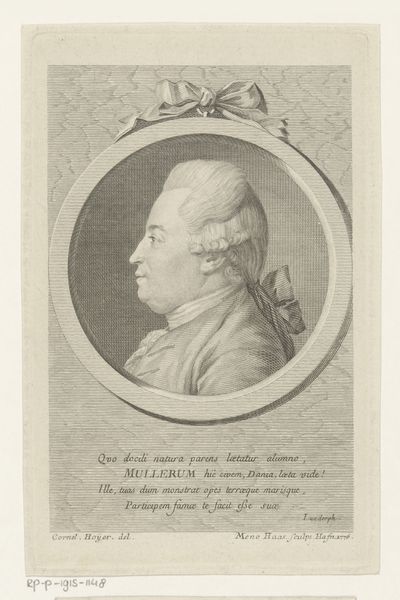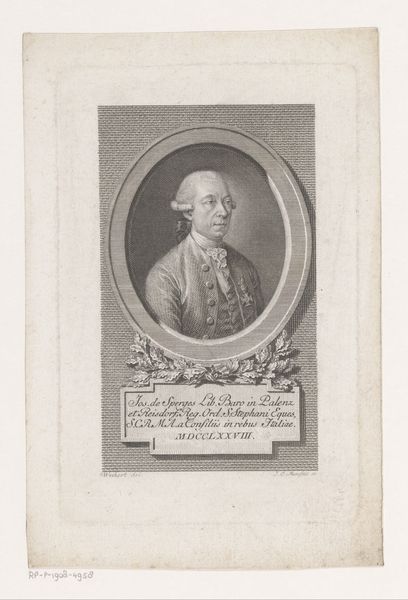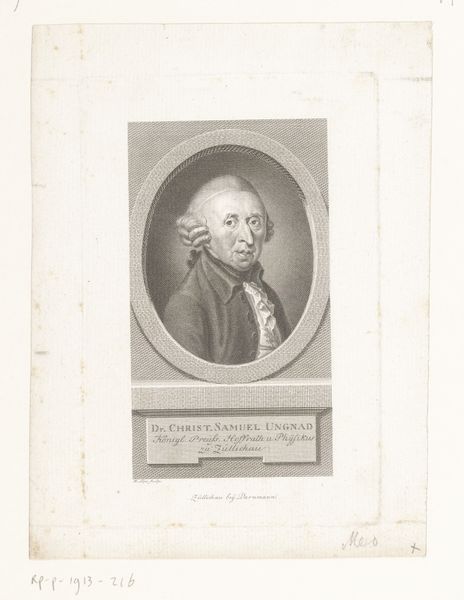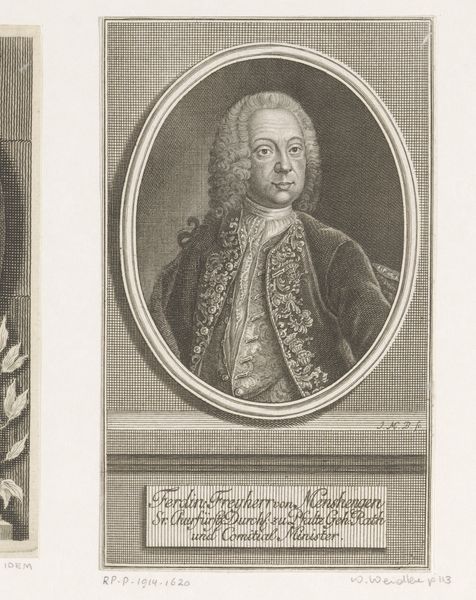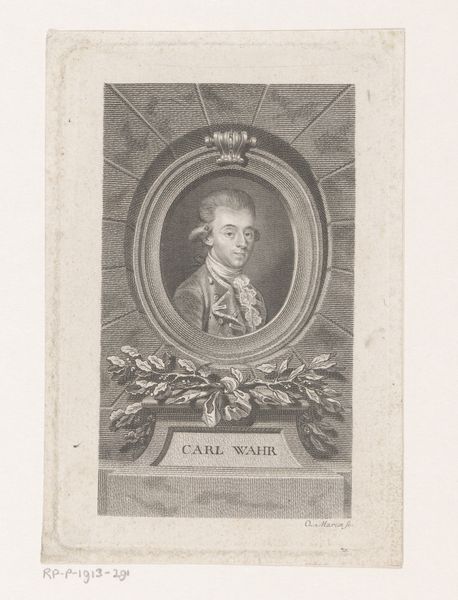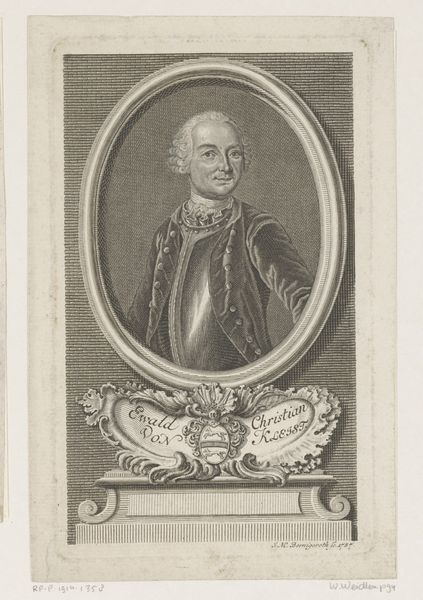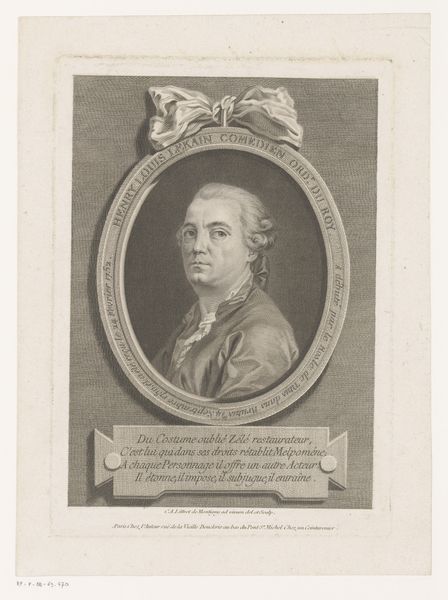
Dimensions: height 150 mm, width 82 mm
Copyright: Rijks Museum: Open Domain
Editor: We're looking at "Portrait of Johann Friedrich Eisenhart," dating roughly from 1756 to 1819, attributed to Gottlob August Liebe. It’s an engraving. I notice how the oval portrait is neatly framed by a wreath. How would you describe the composition and the overall feeling it evokes? Curator: The engraving is quite formal. Observe the linear precision, the meticulous detail in the subject's attire and features. Note how the oval shape contrasts with the rectangular base bearing the inscription and heraldic crest. These shapes generate a visual cadence which invites closer inspection of individual elements. Do you perceive the contrast in textures as well? Editor: Yes, the smoothness of the face against the patterned background behind the oval stands out. What significance do you ascribe to these formal contrasts? Curator: Formally, it elevates the figure through meticulous construction of the composition. This precision lends a gravitas, reflecting perhaps the subject's social standing through carefully calibrated artistic elements. What else do you notice? Editor: The way the light and shadow play across his face… the contrast seems more pronounced on one side, drawing my attention to that side of his face. It almost creates a subtle asymmetry. Curator: Exactly! It draws the eye, prompting an almost psychological reading based entirely on the treatment of light and line. We may thus analyze not merely *what* is depicted but also *how*. Editor: This way of analyzing the work, just by looking at its composition, makes me appreciate the artwork at a deeper level. Curator: Indeed, attending to formal elements often opens up novel avenues for interpretive understanding.
Comments
No comments
Be the first to comment and join the conversation on the ultimate creative platform.
